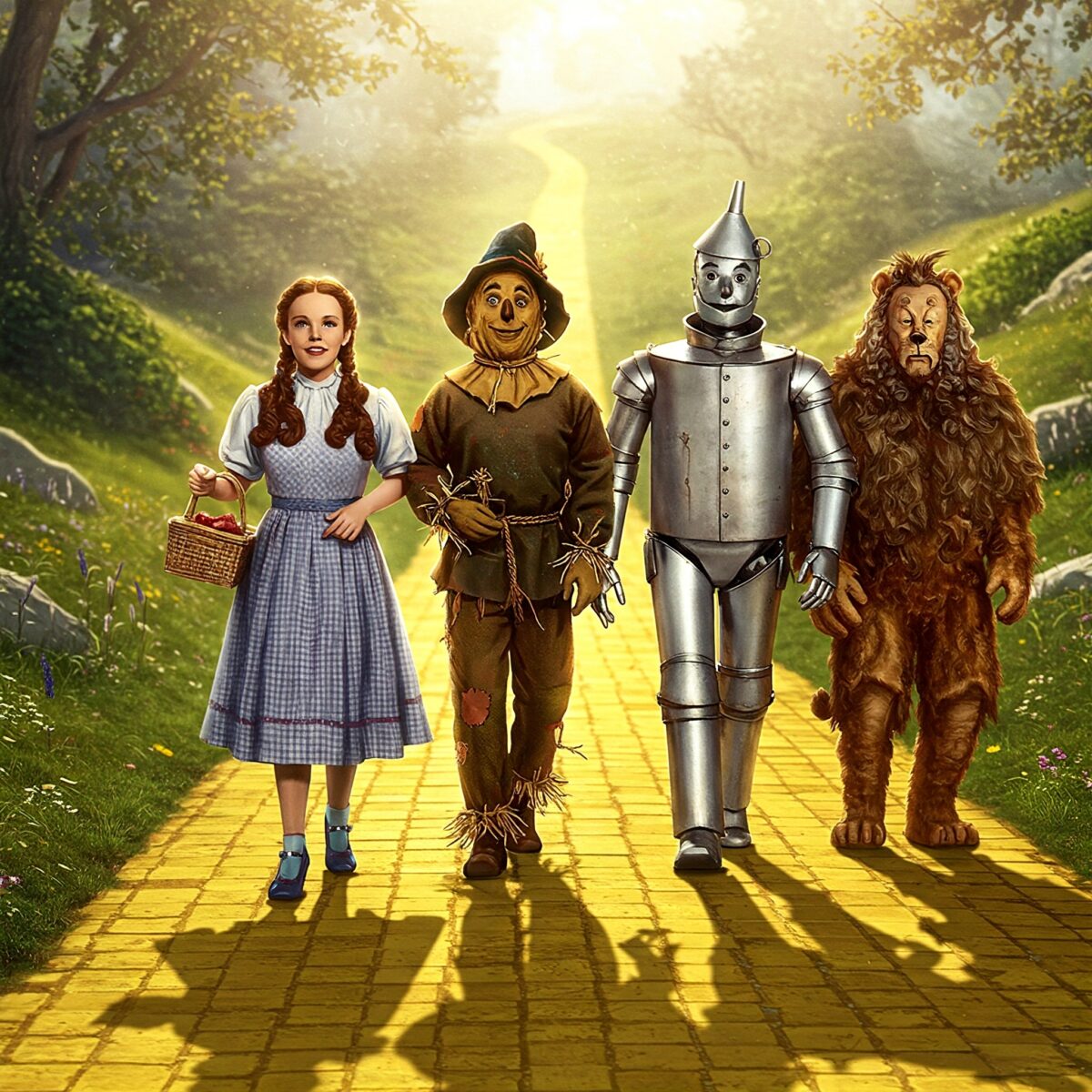Today, May 17th, might seem like just another date on the calendar. The coffee brewed, emails piled up, and the rush of the modern world continues its relentless pace. But if we take a whimsical step back in time, precisely 125 years ago today, on May 17, 1900, something rather magical happened. A book was published that would go on to capture the hearts and imaginations of generations, proving that sometimes, the most profound lessons come wrapped in glittering shoes and carried along a yellow brick road. We’re talking, of course, about L. Frank Baum’s timeless classic, The Wonderful Wizard of Oz.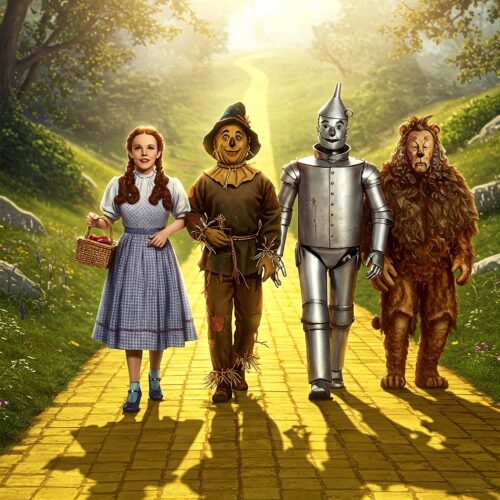
Now, you might think, “A children’s book? How is that a significant historical event, and what could it possibly tell me about navigating my adult life in 2025?” Excellent questions! But the story of Oz is far more than just a simple fairy tale. Its creation, its themes, and its enduring legacy offer a surprisingly rich tapestry of insights into human nature, the pursuit of dreams, and the power that lies within us all. So, let’s take a detailed, light-hearted, and hopefully motivational stroll down memory lane, exploring the origins of this beloved story and discovering how its magic might just help you skip a little lighter down your own path today.
The Man Behind the Curtain (and the Book!)
Our story begins not in a magical land, but with Lyman Frank Baum, a man who wore many hats (though none as sparkly as Glinda’s). Born in 1856, Baum had a childhood filled with imagination and a passion for stories, but his early adult life was a whirlwind of varied, often unsuccessful, ventures. He tried raising fancy poultry, managing an opera house (which burned down, dramatically!), selling fireworks, working as a traveling salesman for lubricating oil, and even running a general store in a drought-stricken Dakota territory town called Aberdeen. Yes, before he penned one of the world’s most famous fantasies, L. Frank Baum was navigating the very real, often challenging, landscape of American commerce.
During his time in Aberdeen, he also dabbled in journalism, buying a local newspaper, The Aberdeen Saturday Pioneer. It was here, writing a column, that he first honed his voice and connected with an audience. When the newspaper failed, he moved his family to Chicago, a city bustling with energy and the site of the upcoming World’s Columbian Exposition, a fairyland of invention and wonder that undoubtedly fueled his creative spirit.
In Chicago, Baum found a job as a reporter and later as the editor of a trade magazine about the decorative window industry. He also started writing light verse and children’s stories to entertain his four sons. His mother-in-law, a prominent suffragist named Matilda Joslyn Gage, encouraged his writing, recognizing his unique talent for weaving tales that captivated young minds. His first book for children, Mother Goose in Prose, was published in 1897 and sold well.
The stage was set. Baum had experienced hardship, failure, variety, and finally, a glimmer of success in writing. He understood the challenges of the real world but possessed an unshakeable belief in the power of imagination. He wanted to create a truly American fairy tale, one that wasn’t filled with the grim moralizing or dark forests of European folklore. He envisioned a story with American children in an American setting (even if that setting was fantastical). Legend has it the name “Oz” came from his filing cabinet, where he saw labels for “O-Z”. Whether true or not, it adds to the whimsical origin story.
He collaborated with illustrator W.W. Denslow, whose distinct, cheerful, and slightly art-nouveau style perfectly complemented Baum’s vision. Together, they created a visual and narrative world that was fresh, vibrant, and utterly unlike anything else. When The Wonderful Wizard of Oz was published on May 17, 1900, it wasn’t an immediate, earth-shattering sensation everywhere, but it quickly gained traction, selling out its initial print run and becoming the best-selling children’s book for two years. It was a significant moment, launching a beloved franchise and embedding itself deeply into the American cultural psyche.
The Magic of the Story: More Than Just Talking Animals
What was it about this seemingly simple story that made it so special? The plot is deceptively straightforward: a young girl named Dorothy is swept away from her drab Kansas farm by a tornado and lands in the colorful, confusing Land of Oz. To get home, she must follow the Yellow Brick Road to the Emerald City and ask the great and powerful Wizard for help. Along the way, she meets the Scarecrow who wants brains, the Tin Woodman who wants a heart, and the Cowardly Lion who wants courage. They face trials, meet strange creatures, and eventually discover the truth about the Wizard and themselves.
But within this seemingly simple narrative lay revolutionary ideas for its time. The protagonist was a relatable, ordinary girl, not a princess. Her companions weren’t magical creatures from birth but beings who felt they lacked something fundamental. The land was strange but logical within its own rules. And most importantly, the central message wasn’t about rescue by a prince or fairy godmother, but about finding strength and capabilities within oneself.
The book’s success wasn’t just about a good story; it was about capturing a feeling. The optimism of the turn of the century, the fascination with ingenuity (like the Tin Woodman’s construction), and the desire for distinct American myths all played a part. It resonated because it was hopeful, imaginative, and grounded in a relatable yearning for home and belonging.
Your Own Yellow Brick Road: Applying Oz Lessons Today
Now, let’s fast forward 125 years. Your life in 2025 might feel a million miles away from a dusty Kansas farm or a land of Munchkins. Yet, the journey Dorothy and her friends take holds surprisingly potent lessons for navigating the complexities of modern life.
Lesson 1: The Power of “Home” is Within You (and Your Connections)
Dorothy’s entire quest is driven by a single desire: to get home. She believes only the Wizard has the power to send her back to Kansas. After a perilous journey, facing witches and winged monkeys, the “magic” solution is revealed by Glinda: the power was in her silver shoes all along. She just had to click her heels and wish to be home.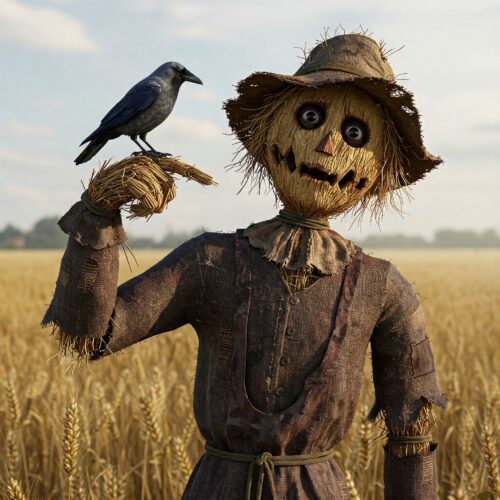
- Application Today: How often do we search for external solutions to internal needs? We might chase a new job title, a different city, a relationship status, or a material possession, believing that will make us feel secure, happy, or “at home.” Dorothy’s revelation reminds us that true belonging, peace, and security aren’t just physical locations or external circumstances. They are often states of mind, built on self-acceptance and nurtured by the genuine connections we have with others. Your “home” might be the feeling of comfort in your own skin, the strength you draw from loved ones, or the sense of purpose you cultivate. Stop seeking magic shoes on the outside and recognize the power you already carry with you.
Lesson 2: You Already Have the Brains (Embrace Your Inner Scarecrow)
The Scarecrow thinks he’s unintelligent because he doesn’t have a conventional brain. He seeks the Wizard to grant him one. Yet, throughout the journey, it is often the Scarecrow who comes up with the cleverest plans and solutions. He demonstrates ingenuity and logical thinking long before the Wizard gives him a diploma filled with pins and needles.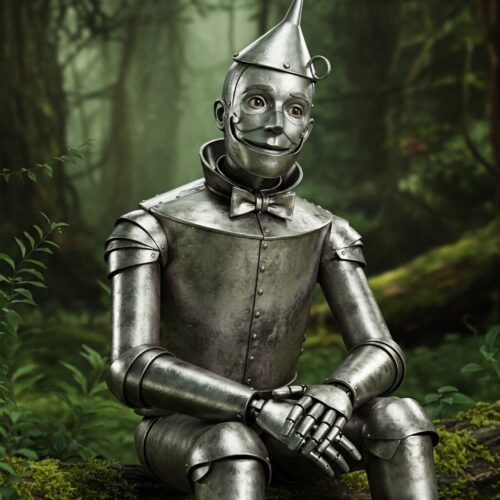
- Application Today: We often suffer from imposter syndrome or doubt our own intelligence and capabilities, especially when facing new challenges or comparing ourselves to others. The Scarecrow teaches us that intelligence isn’t just about formal education or having all the answers immediately. It’s about curiosity, learning, problem-solving, and applying what you know (or can figure out). Don’t wait for external validation or a magical “brain” boost. Trust your ability to learn and adapt. Ask questions, explore ideas, and piece things together. Your brain is far more capable than you might give it credit for.
Lesson 3: You Already Have the Heart (Listen to Your Inner Tin Woodman)
The Tin Woodman believes he is incapable of love or feeling because he is made of tin and lacks a heart. His greatest desire is to feel deeply. Yet, he is the most compassionate member of the group, crying tears that rust his joints at the slightest sadness and agonizing over harming even an insect.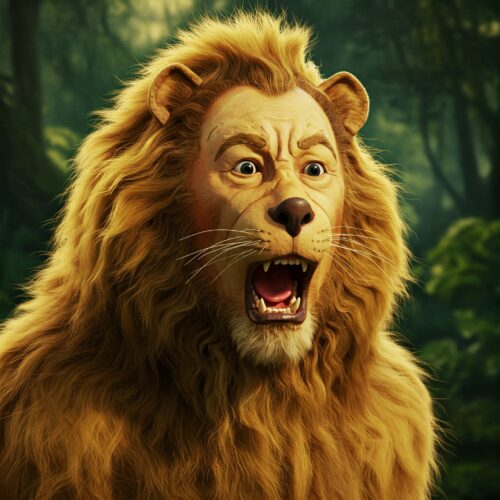
- Application Today: In a world that can sometimes feel cynical or disconnected, we might worry that we aren’t empathetic or caring “enough.” We might put up emotional armor to protect ourselves. The Tin Woodman reminds us that the capacity for feeling and compassion is often inherent, even if we feel disconnected from it. Look for the moments when you feel sympathy, kindness, or concern – those are the signs of your heart working. Connecting with your emotions and showing empathy towards others isn’t a weakness; it’s a powerful part of being human. Don’t let the “tin” exterior of daily stresses or past hurts convince you that you lack a heart.
Lesson 4: You Already Have the Courage (Be Like the Cowardly Lion)
The Cowardly Lion yearns for courage, believing he is a failure because he experiences fear. He roars loudly but admits to being terrified inside. Yet, repeatedly throughout their journey, he performs acts of incredible bravery to protect his friends, facing down terrifying creatures and dangerous obstacles despite his trembling fear.
- Application Today: We all feel fear. Fear of failure, rejection, the unknown, inadequacy. The Cowardly Lion is the ultimate illustration that courage is not the absence of fear, but the willingness to act despite feeling afraid. If you’re waiting until you feel completely fearless to pursue a goal, start a new project, have a difficult conversation, or step outside your comfort zone, you’ll be waiting forever. Acknowledge your fear, feel its tremor, and then take the step anyway. That is courage. You demonstrate it every time you push past hesitation and move forward.
Lesson 5: Don’t Be Fooled by the Great and Powerful (Trust Yourself)
The Wizard of Oz is built up as the ultimate authority, capable of granting anything. The characters place all their hope in his power. The reveal that he is just a “humbug,” a clever showman from Omaha using tricks, is initially shattering. But it forces the friends to recognize that the Wizard didn’t give them their desires; he simply made them realize they already possessed them.
- Application Today: We often look to external authorities, experts, or powerful figures to provide us with answers, validation, or solutions. While guidance is valuable, the Wizard’s lesson is a gentle nudge to trust your own intuition and capabilities. Don’t blindly accept someone else’s definition of your limits or what you need. Question assumptions (respectfully, of course!). Recognize that the power to change your life, to find happiness, or to achieve your goals often resides within you, not solely with external “experts” or authority figures. You are your own greatest asset.
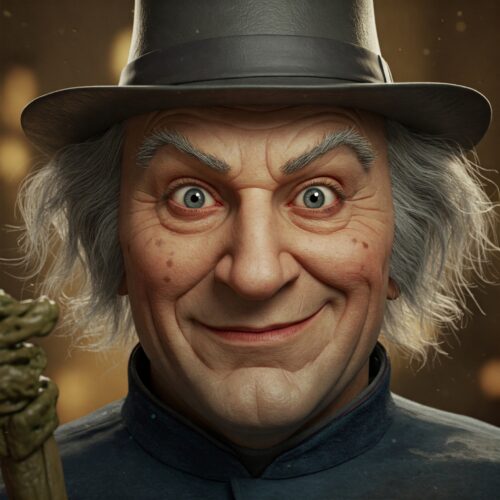
Lesson 6: The Journey Itself is Transformative (Embrace the Yellow Brick Road)
The Yellow Brick Road is not a direct, easy path. It’s winding, it has dangers (the Kalidahs, the poppies), and it leads to unexpected places. The friends face challenges that test them and force them to rely on each other and their nascent strengths. By the time they reach the Emerald City, they are different, stronger individuals than when they started.
- Application Today: Life isn’t a straight line. There will be detours, obstacles, and moments when you feel lost. The “yellow brick road” of your career, relationships, or personal growth will have its twists and turns. The lesson here is to value the process as much as the destination. The challenges you overcome, the lessons you learn from mistakes, and the relationships you build along the way are what truly shape you. Don’t get so fixated on the Emerald City that you fail to appreciate the journey and the person you become along the way. Perseverance isn’t just about reaching the end; it’s about learning and growing through every step.
The Enduring Magic on Your May 17th
One hundred and twenty-five years after its publication on May 17, 1900, The Wonderful Wizard of Oz continues to enchant because its core message is profoundly true and universally human. It’s a light-hearted fantasy that speaks to our deepest aspirations and insecurities.
So, as you go through your day today, May 17th, remember Dorothy and her friends. Remember that the qualities you seek – the intelligence to solve problems, the heart to connect with others, the courage to face challenges, the power to find your way home – are not distant, unattainable gifts granted by some external “Wizard.” They are likely already within you, waiting to be acknowledged, trusted, and used.
You have the brains, the heart, and the courage. You are already on your unique yellow brick road. The magic isn’t a secret key held by someone else; it’s the combination of your own inherent strengths and the journey you choose to take, step by often-uneven step.
Happy May 17th. May you find the wonder in your own journey today, and remember that you have everything you need to click your heels and get where you need to go. The power is and always has been within you. Now, go on and skip down your road!

